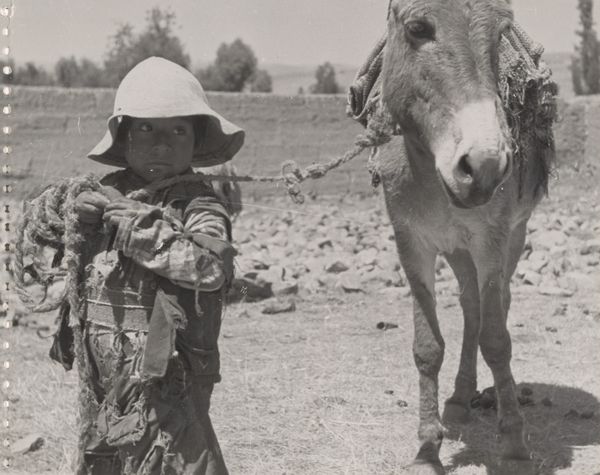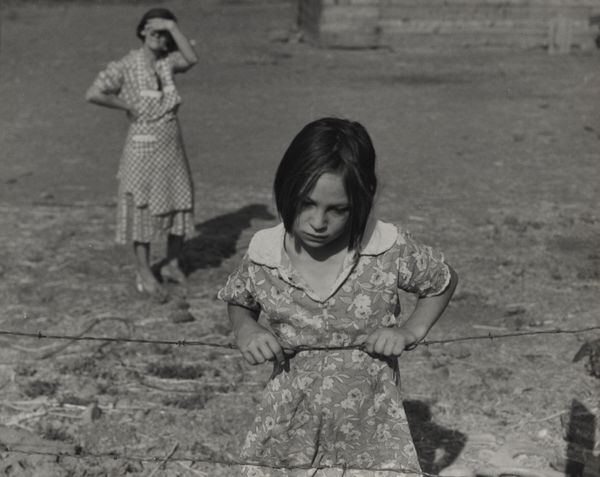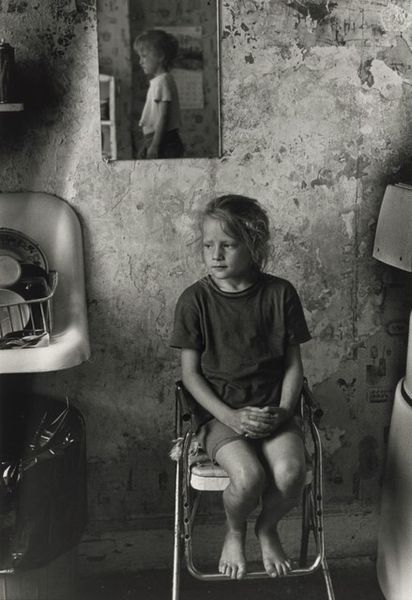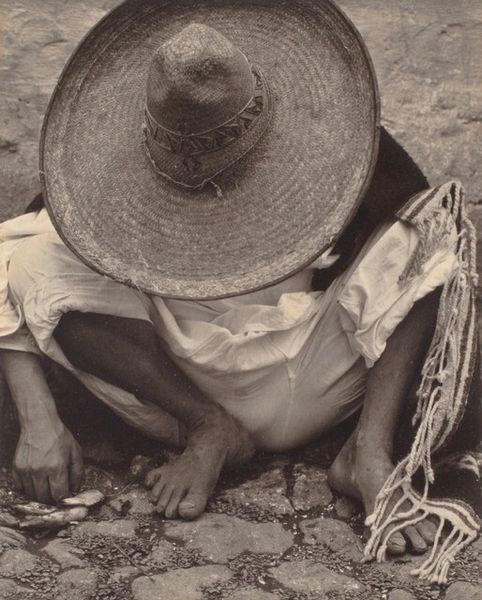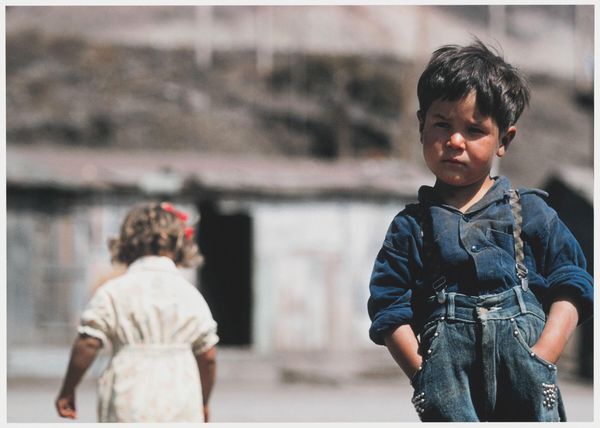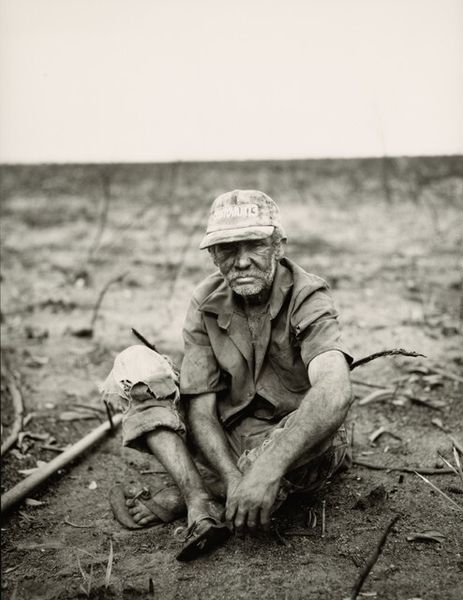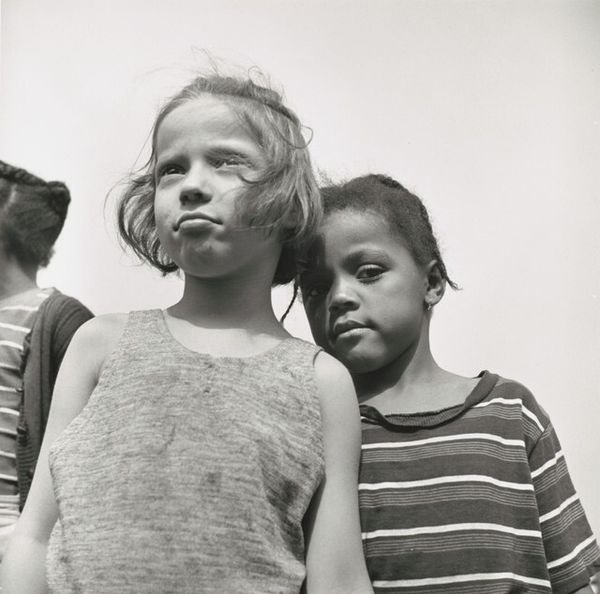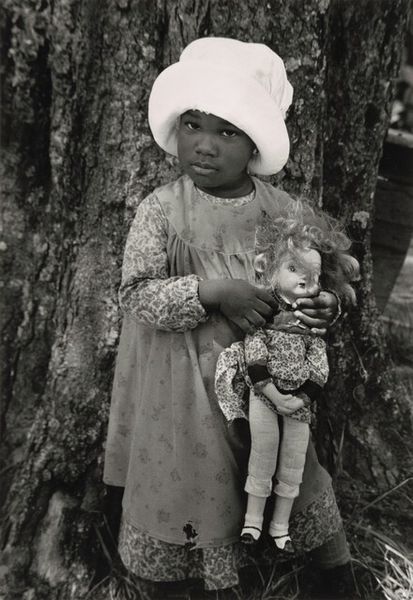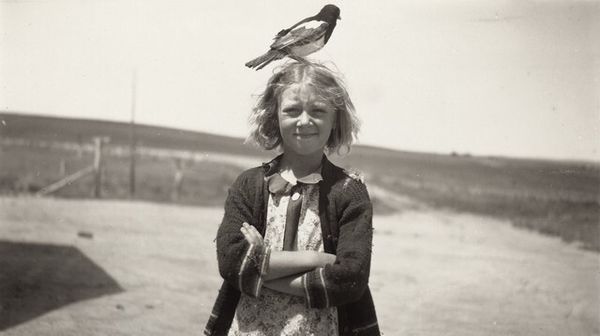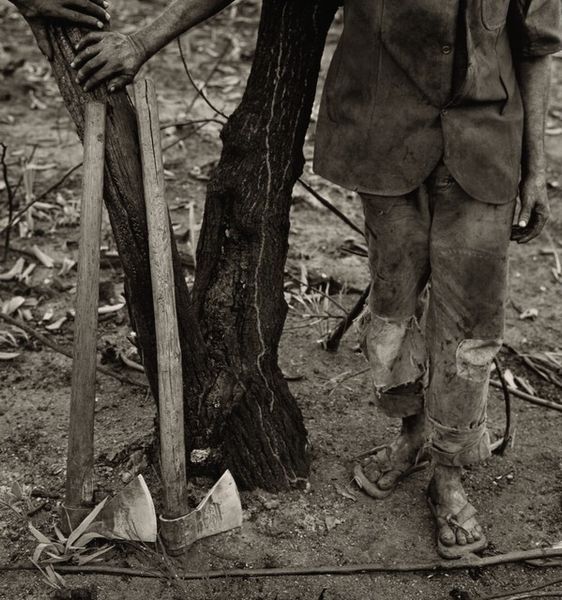
Dimensions: image: 26.2 × 34 cm (10 5/16 × 13 3/8 in.)
Copyright: National Gallery of Art: CC0 1.0
Editor: This is "Portugal," a gelatin silver print by Gordon Parks from 1950. The scene is rural, featuring a young shepherd. There’s a stillness about it, almost like a memory. How would you interpret this work? Curator: It's striking how Parks uses the enduring image of the shepherd as a symbol here. The child with his flock evokes ancient pastoral traditions. Consider how loaded the image of the shepherd is, from classical literature to religious iconography – it's a persistent, almost primal image of care and guidance. Does this resonate with you? Editor: Yes, it’s almost an archetypal figure. I’m curious, how does that symbolism interact with the specific context of 1950s Portugal? Curator: The photograph becomes more complex when you realize Parks shot this while documenting poverty and social injustice. So, while the shepherd is a symbol of care, it’s juxtaposed against a reality of hardship, suggesting a vulnerability inherent in their way of life. The choice of black and white underscores a sense of timelessness, yet anchors us to the specific socio-economic conditions of the time. Editor: So, the photo operates on two levels – timeless and timely? Curator: Precisely! The symbolic weight of the shepherd is amplified, even challenged, by the realities Parks unflinchingly captured through photojournalism. This isn’t just a romantic portrayal of pastoral life. The boy's gaze carries a weight, an awareness perhaps, that complicates any idealized reading. Editor: I never thought of it that way. The photo seems much more profound now, knowing the layers of meaning behind the simple image of a shepherd boy. Curator: It shows how powerful images draw on our collective cultural memory to tell intricate stories about individual lives within broader social contexts.
Comments
No comments
Be the first to comment and join the conversation on the ultimate creative platform.
